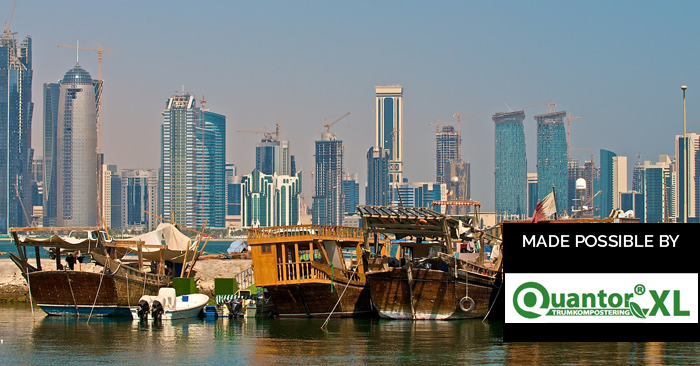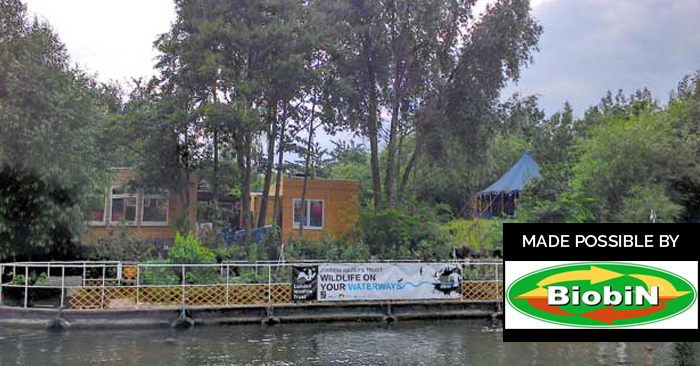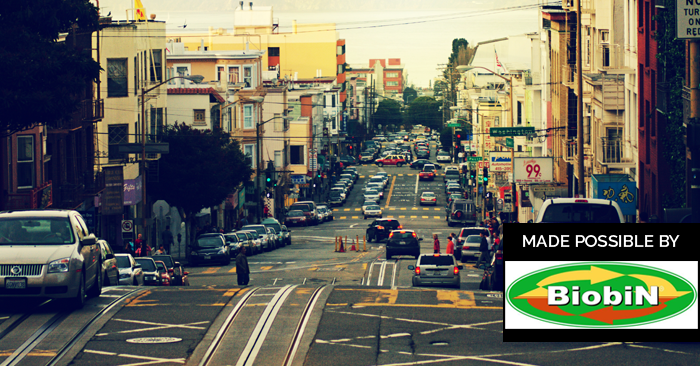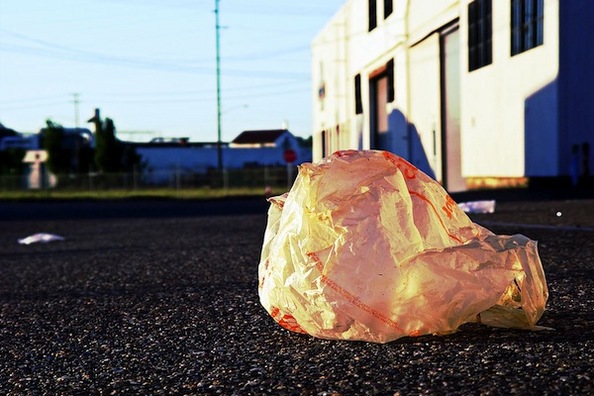In Focus: The City To Soil Composting Process
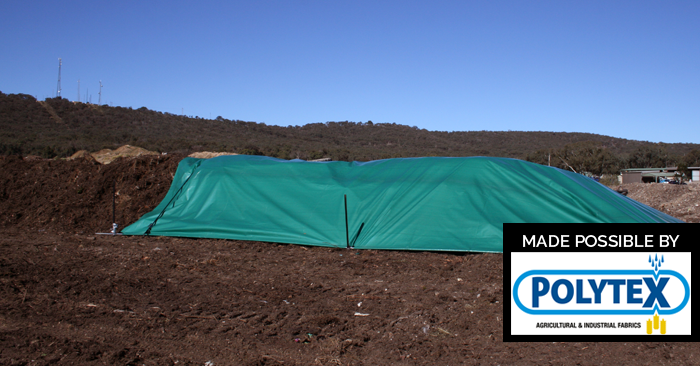
This episode corresponds to Lesson 6 of our online course.
In this twelfth episode, we speak with Organics Recovery Specialist Gerry Gillespie about the City to Soil organics collection program, and their unique composting process using minimal machinery or manpower; ideal for remote locations and small farms.
Thank you to Polytex for making this episode possible.
At the cutting edge of the Poly Textile fabrication industry, Polytex is a reliable supplier of quality products, servicing a wide range of customers from industry, agriculture, construction, commercial spaces, and mining in Australia and overseas. Polytex designs, manufactures and services the right product at a competitive price. You can deal confidently with Polytex. For more information, visit www.polytex.net.au.
EM: So Gerry, would you mind just giving us a little background information on City to Soil and give us some background information on how it all got started?
GG: We commenced using City to Soil as a program in 2003/4 in a little town called Queanbeyan, which is next to our national capital. What we were trying to do at the time was demonstrate that we could collect clean, source separated organic waste, turn it into a high quality compost, and get it into agriculture for much cheaper than we could put it into landfill.
And we demonstrated that we could actually do that. We could collect it, process it, carry it two hundred kilometers, and put it at a farm gate for about fifty dollars a tonne, including profit when the disposal fee to landfill was seventy-five dollars a tonne.
The thing that really surprised us was the very, very low levels of contamination. The entire focus right through the City to Soil program has been on the idea that this material is going into agriculture to produce food, so it must be clean. And we’ve found that that message absolutely resonates with people.
EM: Mh-hm.
GG: Anyway, after the first very successful trial, we were given a two million dollar grant to run the program in four areas of New South Wales – four council areas. One of those areas is four and a half hours away from where we are here. If you use the normal method of composting, it would have meant that we would have been loading machinery onto trucks and carrying it from one place to another – we would have used up our two million dollars in a very short space of time. So it was clearly necessary to find a new way of composting.
EM: Yeah – and what was that new way of composting, then, that you developed.
GG: So we really…we developed this process of covering the material and using an inoculant, and it’s been very, very successful. It’s more or less, if you look back at the history of composting, it’s a combination of what the Japanese community call “Bokashi”, which uses effective microorganisms. These inoculants speed up the process, but more importantly they change the biological nature of the compost pile.
These sorts of processes have been used – there’s a very good description if anybody has the old book by Sir Albert Howard called “An Agricultural Testament”, pages forty-eight and forty-nine are almost this process absolutely described, so it’s very much like the original biodynamic composting process as well.
EM: Okay, and maybe you can give us a talk through the actual process? How do you go about it?
GG: So, the composting process that we use for City to Soil, is basically that we’ve asked people to give us clean, source separated product because we’re putting it back into the soil to grow their food. And people really seem to understand that, because our contamination rates are very, very low. We bring the material into the composting site, and we spread it out on the ground. We take out any obvious contamination – and there are things you miss in that first step. And we don’t shred: that’s very, very important. The argument is because we collect our food waste and the garden waste in one two-hundred-and- forty liter wheel bin, all of that material, pretty well most of it will be no longer than you arm and no thicker than your thumb. So most of that material will break down without shredding. If you do shred in that first stage and there’s a bottle that you’ve missed, what happens is you end up with glass, or plastic, all the way through your compost.
EM: Mh-hm.
GG: And then we get it very, very wet; so somewhere between forty percent and sixty percent moisture. Then we inoculate it with the inoculants that we’ve prepared previously. Then we push it up into a pile, we put a cover over the compost pile, and we put an indentation. And what normally happens then is that green waste in that circumstance will go up to about seventy degrees Celsius, so it gets very hot. That heat drives the moisture out of the pile, onto the inside of the cover, if you’ve got a cover on, and all the water runs off because it’s a slope. If you have an indentation in the top, then what it causes is: the two sides of the compost pile will push the water up toward the top, but most of it will drip into the bit that’s indented and fall back into the pile. That actually means that in most instances – not all, but in most instances we don’t have to apply any more water after that first stage. Although sometimes we put more water on in the middle stage, about six weeks into the process.
But then, after the compost goes through the seventy degrees Celsius, the family population – that’s the first stage, aerobic stage of composting, is totally an oxidation process. Once it gets to that peak, all those families change, and they collapse back into the pile and the process becomes fermentative. So it’s a fermentation process, much the same way as you’d make…as a farmer might make silage, or the Germans might make sour kraut, it uses lactobacillus as the principal biological agent. But those biological processes can change quite dramatically in the compost pile.
So then we just leave it for another six weeks. We leave it for six weeks in the first stage, we take the cover off and check the moisture and everything is breaking down quite well, and we may put a bit more inoculant on or we may put more moisture on, and we put the covers back on. We sometimes turn it at that stage, put the covers back on and then leave it for another six weeks – or another twelve weeks if possible, because in that secondary stage the humus in the pile is actually building quite dramatically. We’ve found with our compost process…at the end of this process we’ve had thirty to fourty percent more compost than you’d normally have if you have a totally aerobic process.
EM: Amazing.
GG: In this compost process, what we’re trying to do is make something. Most waste management processes are trying to reduce something – they’re trying to get rid of something. Which is how the oxidation process in compost is quite often looked at from a waste manager’s perspective. What we’re doing is: we are not trying to solve a problem; we are trying to develop an opportunity. It’s a totally different focus; we’re trying to make something beneficial out of something, and we want to return it back to the soil to give an even bigger impact biologically into the soil.
Interestingly, the council in Armidale, one of the five councils where we’re using the process now (they’ve been using our inoculants strictly now for about eight or nine months): the Environment Protection Authority has just given them an extended license to process fifty thousand tonnes a year on their site -which is large for a regional center in Australia – but they’ve made it a condition of the license that they have to use our process. Which I think is wonderful.
EM: Yeah, it really is. It’s a testament to the success of the process then.
GG: Absolutely, yeah.
EM: And so let me go back a bit now and ask you a few more details – can you tell me what kind of covers you use for the compost?
GG: The thing that we found to be best of all is what in Australia we call grain covers. They’re very heavy-duty, – they’re generally used to cover large outdoor piles of rice and wheat in Australia – they’re very durable which means that we can have the same cover for a long time without it deteriorating because of the ultraviolet light. So, it’s important to get something of good value. If you’re going to invest in something, you’re better off spending a couple of hundred dollars on something, because it’ll last years. Sure, you can go out and buy plastic, or you can go and buy a cheap cover, but, you know, it’s gone in six months. So yes, we try to rely on quality.
EM: Mh-hm. And they’re not breathable covers, are they?
GG: No, they’re solid, yeah. They’re actually, you don’t let any air – they entire idea is to contain the microbial processes. You’re trying to create a circumstance where they’ve got a food supply, and they’ve got enormous family members there together. While the food supply and the family members and the right conditions are there with moisture, then they’ll breed up. And in breeding up, they’re creating more humus, they’re pulling more things in from the atmosphere, and they’re creating beneficial outcomes.
EM: Excellent, and how much machinery, then, would it take to run a program like this?
GG: Very, very, little. Our entire objective in designing the process was to have something that really used minimal machinery. I’ve tried to get farmers to use the process because the only thing they need is their tractor. And most tractors have a bucket on the front so they can move manure and things around their farm. So the only things you need, basically, are the tractor and some supply of organic material, and just a simple cover. So, not a complex process.
And the inoculants: if you look up lactobacillus on the internet, you’ll find the start of those processes. Or even better still, go to your locate effective microorganism supplier and buy some of their product.
EM: And you can make the inoculant yourself?
GG: Yeah, I…we made it in a hotel room in Egypt. So, basically the process is: half a cup of rice in a small jar – a honey jar – with water. And you leave that sit for three or four days. It pulls the lactobacillus in from the atmosphere. With a loose-fitting lid: the lid has to be on, you don’t want little animals getting in there because they carry other types of biology, but the air contains the lactobacillus.
So, rice in water, for four days in a dark cupboard. And then you take that water, pour it off into two litres of normal milk – or skimmed, I’ve used skimmed milk, tinned milk, powdered milk, all sorts of treated milk. After about another four days, all the solids in that milk will form a cheese on top, which is about two centimetres thick, or an inch thick, on top. You take off the cheese and feed it to the chickens, or the dogs. Animals love it. It’s beautiful; it’s quite edible stuff, actually.
And then the serum, which is underneath: you dilute that one hundred percent with rainwater, because you don’t want any chlorine in there. If you do use tap water, let it sit for an hour. But dilute it one hundred percent with water, add a cup of molasses, and that’s the basic product. It will stay in that form for about three years without – and quite stable.
And then we take that product, and we extend it again. We turn it into a more extensive product; it can be used as a fertiliser or a compost inoculant or…. The secret to the whole thing, to my mind, is introducing a process that enables the biology to be as diverse as possible. The more diverse the biology in the compost heap, the better outcome you’re going to get in the longer run.
EM: Mh-hm. And the quality of your compost, then, is quite good?
GG: Brilliant! It matches the best of any compost I’ve ever seen anywhere. We have local people here – there’s a company called Ylad, west of us, who sell their compost for about one-hundred-and-twenty-five dollars a tonne, whereas commercial compost in this area, in bulk, would normally sell for about forty dollars a tonne.
The end objective of what we do is to have a product that is biologically active, has high levels of humus, and it uses the compost material simply as a substrate – as a vehicle to carry the biology back out into agriculture.
EM: Excellent, and so because of the nutrient value, you can sell it at a very high price. And can you tell us a little bit about the feedstock now. I know that this process can operate with variable feedstocks – so what kind of materials can you use?
GG: There are a whole lot of different feedstocks that we’ve used in the process so far. Normally in a composting process you have to have a ratio of about twenty-to-one carbon to nitrogen, up to about sixty-to-one carbon to nitrogen.
Using this process, we’ve composted Australian native sawdust, which has a carbon to nitrogen ratio of about one-hundred-fifty-to-one, on its own. Now, the reason for this, and the reason why variability of feedstocks does not matter all that much, is that this process pulls its nitrogen base from the atmosphere.
So after it goes through the first phase, or while it’s going through the first phase, the aerobic composting will normally blow off a lot of nitrogen, but the fermentative stage seems to build a whole lot of things back into the process. So yes, the mix of the materials is not really all that crucial. We’ve done it with pure food in New Town in Wales in 2007 and it worked perfectly, or we’ve done it with Australian native sawdust at the other extreme.
EM: That’s really good – it’s a really good advantage. And now Gerry, can you tell us in what contexts would this process be ideal for, do you think?
GG: Well, in terms of using the process, I think the biggest advantage is that it’s excellent for remote locations. We’ve never, ever said that this process is so unique, you know, it’s better than any other compost process in the world. Composting processes have been around since the dawn of time, and nature is very good at doing it in all sorts of different ways. But what we’ve tried to do is come up with a process that can be used in remote locations, or by farmers, to get a very, very good product.
The process is not that different to biodynamic composting, except biodynamic composting is not generally covered. And this is absolutely simple. If you’re a farmer and you don’t have time – you can set up the compost pile, put the cover on, and just go away for six months.
EM: That’s incredible, so it really requires very little. And the odour issues either, isn’t there not?
GG: Not at all. No odour…no shredding, no turning, no odour.
EM: That’s amazing.
GG: Yeah.
EM: And we know that in order to make good quality compost, you need a very clean source of organics – and you mentioned before that you’d had great success with the City to Soil program – can you give us an idea as to why that is?
GG: The thing, I suppose, that’s really unique about – well, I don’t “suppose”. It is. The thing that’s absolutely really unique about City to Soil is the community engagement process. I think people have got to a stage with recycling programs where they see that when they’re putting their newspaper into bin, or their aluminium (or aluminum, as the Americans would say) into a recycling bin, they’re giving that material away. They pay for the service to have the material collected, and in most instances it goes off to some re-processor somewhere, so they’re giving Rupert Murdoch his newspaper back at a discount price. Or they’re giving aluminium away to Comalco or one of these larger companies. Where…if you put organic material into a bin and it’s being made into compost and it’s going back into soil to produce food – the people see that it’s a very real connection.
I think that what we’ve done inadvertently, and in some ways intentionally – we obviously expected to get very clean material from it – what we’ve done is we’ve hit a button in people that really resonates with them.
We’re operating now in five council areas with City to Soil, and our contamination rate seems to get lower and lower, not worse and worse. Most contamination rates around the world in organics recycling, people think they’re doing really well if they only have five percent contamination. Our contamination has never gone above point-four of one percent. The lowest council – we just started at a place called Palerang. Their contamination level is currently running at point-zero-six of one percent.
So, in a small town of about four hundred people, we collected one-and-a-half tonnes of material and the total contamination were two soft drink cans and one plastic pot. That’s absolutely nothing.
EM: That is really incredible. And for our final question now, because we’re running out of time: can you tell us how you get such low contamination rates? What do you do?
GG: What we collect is garden waste and food scraps together. Now, that’s unusual, but in Australia, our circumstances are relatively unusual. We have four hundred and fifty-five million hectares of land under agriculture. Seventy-five percent of that land has got less than one percent organic material in it, so our soils are very low in organic material.
We have about forty-five million tonnes of waste a year, and about sixty percent of that is organic. So it’s an absolute no-brainer that the thing we should be clean product, and getting it back into our soils.
So to make that as easy as possible for people, we use a two hundred and forty liter wheel bin – a cart for the Americans – into which…we give people a compostable bag which sits on their kitchen bench. Because the compostable bag breathes, it allows water to go out of it, and allows the material to lose a lot of its moisture, but it won’t smell. People then tie up that bag and they put that in with their green waste in a two hundred and forty liter wheel bin.
The difference with our bags, is that when we give a household a roll of one hundred and fifty bags, they all have a number on them. So we can, theoretically, if we’ve registered the number against the street address of the house that we gave it to – we know where that bag came from. But we don’t use it negatively; what we generally do is we’ll wait until we get bags back at the composting site, we’ll pull two of those bags out of the compost pile and if there is no metal, glass or plastic in those bags when we open them, that household wins a one hundred dollar hamper of fruit and vegetables.
We’re trying to make people think about where their food comes from. But, more importantly the fundamental thing about City to Soil is trying to connect the urban population back to the rural population. And that whole link is to try to get people to think about the farmer as their food supplier. Because regardless of a farmer’s religious, political or social beliefs, you need to have a relationship with them because they’re growing your food. And they need security and you need security of supply.
So food is very, very important to us. We say to people all the time: if you eat, you’re involved, you know? It’s a process you can’t avoid. And so…and we think this message can transfer quite comfortably into any language, because it’s a very simple message. It’s just simply saying: clean material goes into your food supply.
EM: Amazing, that’s a great message. Well, congratulations on the success of the program, and Gerry, that’s all we have time for today so…
GG: Alright.
EM: Thanks a million for coming on the show.
GG: Okay, talk to you soon!
